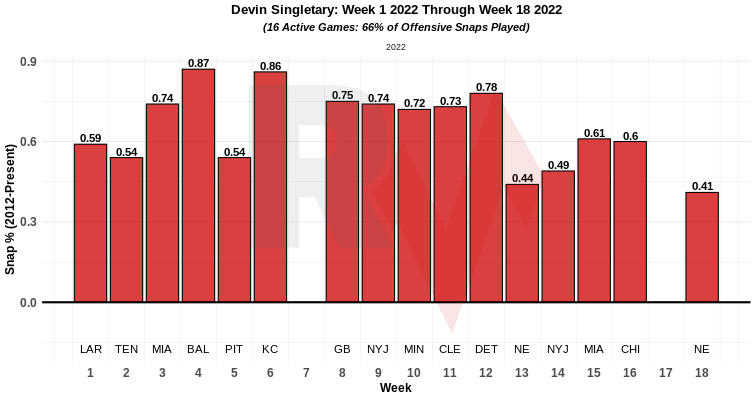After four years with the Buffalo Bills, Devin Singletary agreed to sign with the Houston Texans on a one-year, $3.75 million deal. Bjorn Yang-Vaernet explores what this means for his 2023 fantasy football outlook.
The Houston Texans continued their offensive rebuild by signing Devin Singletary to a one-year, $3.75 million contract on Monday. Singletary is expected to complement Dameon Pierce, who wore down toward the end of last year. The running back by committee should be no surprise as recent coaches from the Shanahan tree tend to use multiple RBs when one is not elite.
The 2022 Season in Review
After the Bills drafted James Cook in the third round in 2022, few expected Singletary to hold on to his job for as long as he did. Although the Bills tried to involve other RBs early in the season, Singletary became the go-to guy from Weeks 3 to 12, playing more than 70% of the RB snaps in seven out of eight games.

Cook started to work in more during Week 13 and from that point forward, Singletary did not play more than 70% of the snaps in a game, including the playoffs. While the Bills liked Cook as a receiving RB, Singletary was not as effective as they would have hoped out of an early-down RB.
In short, Singletary was not very explosive or elusive in 2022. Among RBs with at least 100 rush attempts, Singletary ranked as the RB31 in terms of the share of yards gained after contact and RB22 for his rate of evasion (broken and missed tackles forced), according to charting by Sports Info Solutions. Singletary’s longest rush of the season was 33 yards — not surprising given his 25th percentile forty and 8th percentile weight-adjusted forty.

Translating this to fantasy production, Singletary finished as the RB28 in PPR points per game. Notably, he was the RB24 by opportunity (targets and rush attempts), but just the RB66 in fantasy points over expected. As one can tell from the chart below, outside of one game against one of, if not the worst, defense in the league in Week 16, Singletary was largely inefficient with his workload.
















